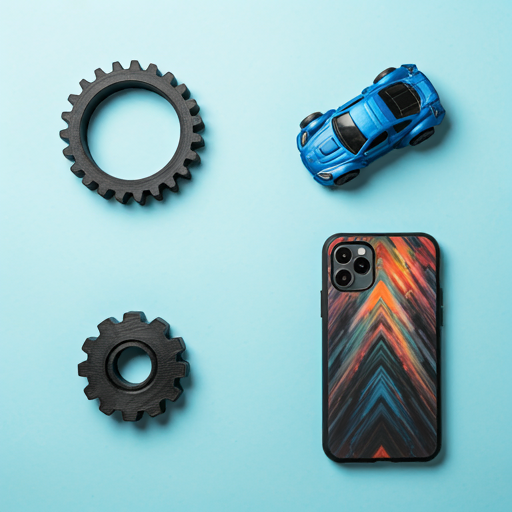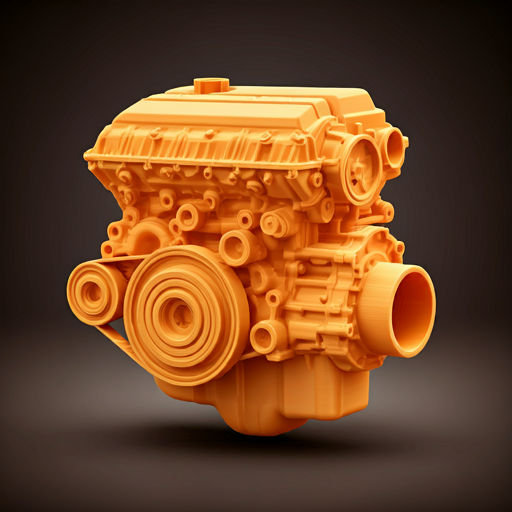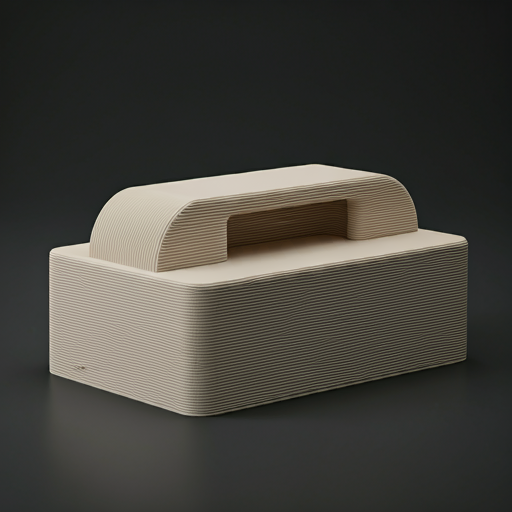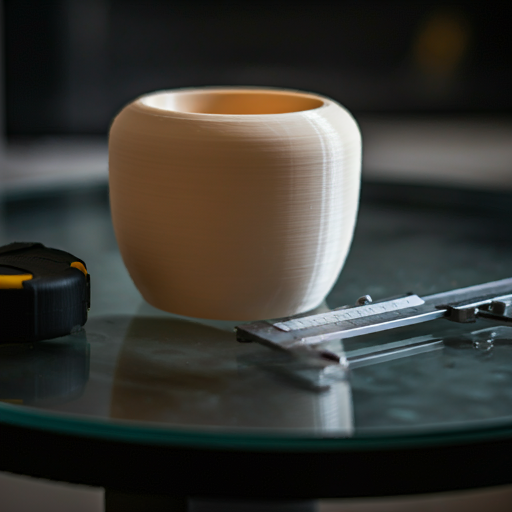
-
How it works
-
Industries
-
Services
-
Material
-
Company
-
Resources













 Industries
Industries
Discover Carbon Fiber PLA Composite—a strong and lightweight material combining the ease of PLA printing with enhanced stiffness from carbon fiber, ideal for high-performance prototypes and functional parts.
Carbon Fiber PLA Composite is a 3D printing filament created by infusing chopped carbon fibers into a PLA (Polylactic Acid) base material. This combination significantly enhances the mechanical properties of standard PLA, providing increased stiffness, strength, and dimensional stability while maintaining PLA's renowned ease of printing. The carbon fibers reduce shrinkage and warping, resulting in improved print accuracy and surface finish. Parts printed with this composite exhibit a matte, slightly textured appearance, adding aesthetic appeal to functional designs. The material offers a higher strength-to-weight ratio, making it ideal for applications requiring lightweight yet robust components, such as drone frames, automotive parts, and structural prototypes. While it retains the biodegradable nature of PLA, the abrasive carbon fibers necessitate the use of a hardened steel nozzle to prevent equipment wear during printing. Carbon Fiber PLA bridges the gap between standard PLA and more advanced engineering materials, enabling the production of functional parts with enhanced performance without compromising on printability.





 FDM compatible
FDM compatible Composite compatible
Composite compatible High Stiffness and Strength
High Stiffness and Strength Lightweight
Lightweight Reduced Warping and Shrinkage
Reduced Warping and Shrinkage Matte Surface Finish
Matte Surface Finish Abrasive to Nozzles
Abrasive to Nozzles Requires Hardened Steel Nozzle
Requires Hardened Steel Nozzle
 Less Flexible than Standard
PLA
Less Flexible than Standard
PLA Higher Cost than Standard PLA
Higher Cost than Standard PLA
Key Carbon Fiber PLA properties rated to guide you in selecting the best fit for your 3D printing needs.
Carbon Fiber PLA Composite is ideal for producing high-strength, lightweight parts with enhanced stiffness and dimensional stability. Its superior mechanical properties make it suitable for functional prototypes, mechanical parts, and applications where strength-to-weight ratio is critical.
 Custom brackets
Custom brackets Interior components
Interior components Lightweight fixtures
Lightweight fixtures Drone components
Drone components UAV parts
UAV parts Structural supports
Structural supports Sporting equipment
Sporting equipment Tool handles
Tool handles High-end gadgets
High-end gadgets Functional testing models
Functional testing models Mechanical assemblies
Mechanical assemblies Structural components
Structural components Functional Prototypes
Functional Prototypes Lightweight Parts
Lightweight Parts Rigid Structures
Rigid Structures Aesthetic Models with Matte Finish
Aesthetic Models with Matte Finish
Provides increased stiffness and strength over standard PLA, suitable for parts requiring rigidity and structural integrity.
| Property | Value, metric |
|---|---|
| Tensile Strength | Approximately 60 MPa |
| Tensile Modulus | Approximately 6,500 MPa |
| Elongation at Break (%) | 5% |
| Flexural Strength | Approximately 80 MPa |
| Flexural Modulus | Approximately 7,000 MPa |
| Notched Izod Impact Strength | Approximately 40 J/m |
| Shore Hardness | Shore D 80 |
Printing with Carbon Fiber PLA Composite is relatively straightforward, similar to standard PLA, but requires a hardened steel nozzle due to the abrasive nature of carbon fibers. The material offers good layer adhesion, reduced warping, and improved dimensional accuracy, making it suitable for high-precision prints.
| Type | Value |
|---|---|
| Lead Time | 1-4 business days |
| Wall Thickness | Minimum 1.0 mm |
| Tolerance | ±0.15%, minimum ±0.1 mm |
| Max Part Size | Up to 450 x 450 x 450 mm |
| Layer Height | 0.1 mm to 0.3 mm |
Offers slightly improved heat resistance over standard PLA but is not suitable for high-temperature applications.
| Property | Value, metric |
|---|---|
| Heat Deflection Temperature (HDT) | Approximately 65°C at 0.455 MPa |
| Thermal Expansion Coefficient | Approximately 50 x 10^-6 /°C |
| Thermal Expansion (Scale 0-100) | 60 |
| Max Service Temperature | Up to 60°C before significant deformation may occur |
The carbon fiber content may affect electrical properties, potentially making the material slightly conductive.
| Property | Value, metric |
|---|---|
| ESD Safety | Not inherently ESD safe; caution required for sensitive applications. |
| Conductivity | Semi-conductive due to carbon fiber; not suitable as an insulator |